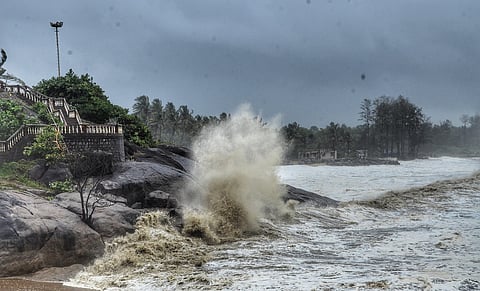

The World Meteorological Organization (WMO) has sounded a global alarm for faster action to protect people from escalating weather, water and climate-related hazards. At its Extraordinary Congress in Geneva from October 20 to 22, the agency’s 193 Member States endorsed a “Call to Action” to achieve universal early warning coverage by 2027 — a key milestone under the UN’s Early Warnings for All (EW4All) initiative.
“Every dollar invested in early warnings saves up to fifteen dollars in avoided losses,” WMO Secretary-General Celeste Saulo said, calling it the most cost-effective defence against intensifying climate extremes. “This Call to Action represents our collective responsibility — no one should die for lack of warning.”
The UN-backed EW4All initiative was launched in 2022 by Secretary-General António Guterres, co-led by WMO, the UN Office for Disaster Risk Reduction (UNDRR), the International Telecommunication Union (ITU), and the International Federation of Red Cross and Red Crescent Societies (IFRC). Its goal is to ensure that every person — regardless of where they live — is protected by life-saving alerts for hazards such as cyclones, floods, heat waves or droughts.
The Call to Action, endorsed at the Congress, urges countries to strengthen all links in the early warning “value chain”:
· Monitoring and forecasting hazards,
· Assessing risks,
· Disseminating alerts, and
· Ensuring communities can act on them
Member countries stressed that technology alone cannot save lives unless alerts are trusted, timely and understandable at the community level. “We must move from delivering forecasts to delivering understanding,” said a representative from Fiji, highlighting the need for culturally inclusive, people-centred communication.
Despite progress, stark inequalities remain. As of 2024, 108 countries report having some capacity for multi-hazard early warning systems — up from 52 a decade ago — but that still leaves nearly half the world’s nations exposed.
WMO data shows that in countries without adequate systems, disaster mortality is six times higher, and the number of people affected is four times greater than in countries with functioning systems.
Many of the largest gaps exist in Least Developed Countries (LDCs), Small Island Developing States (SIDS) and regions affected by conflict.
Assessments of 62 countries found that half possess only basic hazard monitoring capacity, while 16 per cent have less than basic capacity. WMO members called for urgent investments in observing networks, open data sharing, and sustained financing to strengthen these weak links.
The Call to Action outlines several immediate priorities:
·Integrate early warning systems into national climate and disaster policies;
·Secure long-term financing rather than relying on project-based aid;
· Empower national meteorological and hydrological services (NMHSs) with clear mandates and communication authority;
· Ensure inclusivity, combining scientific and indigenous knowledge so that warnings reach the most vulnerable;
· Harness innovation, including artificial intelligence, responsible for enhancing prediction accuracy.
WMO also urged donor countries and development banks to scale up predictable financing for early warning infrastructure and capacity-building.
Over the past 50 years, weather, water and climate-related disasters have claimed over 2 million lives — 90 per cent in developing nations, according to WMO records. As extreme weather events intensify under climate change, early warning systems are one of the most effective tools for reducing casualties and economic losses.
“Lives are being saved every day where these systems exist — but far too many people are still left unprotected,” said Mami Mizutori, head of UNDRR. “This Call to Action is about solidarity, science, and shared safety.”
For highly climate-vulnerable countries like India, where monsoons, cyclones and heat waves already strain infrastructure and livelihoods, the renewed UN push could accelerate integration of multi-hazard early warning systems into development plans. The initiative may also unlock new technical and financial support for upgrading radar networks, expanding community outreach, and improving local response capacities.
As WMO’s Saulo concluded: “Early warnings are not a luxury — they are a human right. The cost of inaction will always be higher.”